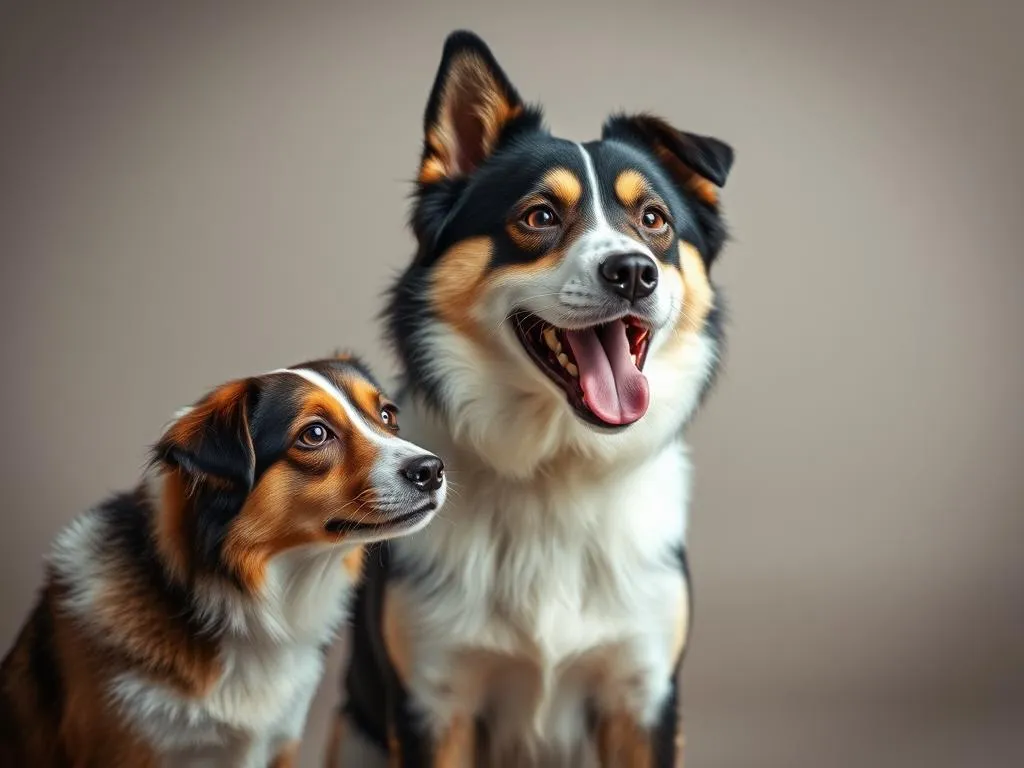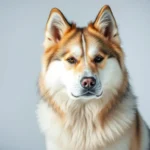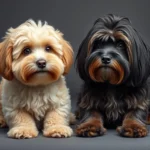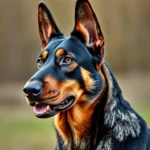
Dogs have long held a special place in human hearts, evolving from wild animals into beloved companions. With thousands of breeds around the world, each with distinct characteristics, the diversity of dog breeds is truly remarkable. Among these, Asian dog breeds stand out not only for their unique traits but also for their rich histories and cultural significance. Understanding these breeds is essential for any potential dog owner, as each breed comes with its own temperament, health concerns, and lifestyle requirements.
Understanding Asian Dog Breeds
Definition of Asian Dog Breeds
When we refer to Asian dog breeds, we are looking at a wide variety of breeds originating from the vast continent of Asia. This category includes dogs from diverse geographical regions such as East Asia (China, Japan, and Korea), South Asia (India and surrounding countries), Southeast Asia (Thailand, Indonesia, etc.), and Central Asia (Mongolia and surrounding areas). Each region has produced breeds that reflect the local culture, climate, and traditions, contributing to the rich tapestry of canine companionship.
Historical Context
The history of dog domestication in Asia dates back thousands of years. Early civilizations in this region recognized the utility of dogs for hunting, herding, and companionship. In many Asian cultures, dogs are not just pets; they play significant roles in folklore, religion, and even as symbols of loyalty and protection. For instance, the Akita Inu is revered in Japan as a symbol of fidelity, while the Shih Tzu has been a cherished companion of Chinese royalty.
Characteristics of Asian Dog Breeds
Asian dog breeds exhibit a variety of common traits, including diverse sizes, coat types, and temperaments. Some breeds, such as the Chow Chow, are known for their lion-like mane and distinctive blue-black tongue, while others, like the Basenji, are recognized for their unique barkless vocalization. Generally, these breeds can be categorized based on their size, ranging from small companions to large working dogs, and they often possess unique temperaments that reflect their historical roles in society.
Popular Asian Dog Breeds
Shih Tzu
The Shih Tzu is a small breed that originated in China, known for its long, flowing coat and friendly personality. These dogs were bred as companion animals for Chinese royalty, and their affectionate nature makes them an ideal pet for families.
- Physical Characteristics: Shih Tzus typically weigh between 9 to 16 pounds and have a distinctive flat face with large, expressive eyes. Their coat requires regular grooming to prevent matting.
- Temperament: They are known to be outgoing, friendly, and good with children, making them suitable for family life.
Akita Inu
The Akita Inu hails from Japan and is recognized for its noble stature and loyalty. Originally bred for hunting large game, this breed is both powerful and dignified.
- Distinct Features: Akitas are large, strong dogs with a double coat that can be various colors, including white, brindle, and various shades of red. They are prone to certain health issues, such as hip dysplasia and autoimmune disorders.
- Training and Exercise: Akitas are intelligent but can be stubborn, requiring consistent training. They need regular exercise to stay healthy and happy.
Chow Chow
Originally from China, the Chow Chow is famous for its unique appearance and aloof personality. With a distinctive lion-like mane and a blue-black tongue, this breed has captured the hearts of many.
- Grooming Challenges: Chow Chows have a dense double coat that requires regular grooming to minimize shedding and maintain coat health. They are also prone to certain health issues, such as hip dysplasia and skin conditions.
- Behavior: These dogs can be reserved with strangers, making early socialization essential for a well-rounded pet.
Basenji
Often referred to as the “barkless dog,” the Basenji is an ancient breed that originated in Central Africa but is often included in discussions of Asian dog breeds due to its historical connections.
- Unique Characteristics: Basenjis are small to medium-sized dogs with a short, fine coat and a curled tail. Their unique vocalization resembles a yodel rather than a bark, which has earned them their nickname.
- Exercise Needs: They are energetic and intelligent, requiring regular exercise and mental stimulation to avoid boredom.
Kishu Ken
The Kishu Ken is a medium-sized dog breed from Japan, known for its hunting abilities and loyalty. This breed is less common outside of Japan but has a devoted following among enthusiasts.
- Physical Traits: Kishu Kens have a well-muscled body, a short coat, and a bushy tail that curls over the back. They thrive in active households and require daily exercise.
- Temperament: Known for their independence, Kishu Kens may be reserved with strangers but are deeply loyal to their families.
Tosa Inu
The Tosa Inu, another breed from Japan, is often considered a rare gem among dog breeds. Developed as a fighting dog, this breed has a unique history and is known for its strength and courage.
- Cultural Significance: Tosa Inus were bred as part of a tradition of dog fighting, which is now illegal. They are large, muscular dogs with a short coat that requires minimal grooming.
- Temperament: Despite their origins, Tosa Inus can be gentle and affectionate with their families but require early socialization and training.
Care and Maintenance of Asian Dog Breeds
Nutrition
The dietary needs of Asian dog breeds can vary significantly. Generally, these breeds benefit from high-quality dog food rich in protein and essential nutrients. A balanced diet tailored to the specific breed’s age, weight, and activity level is crucial for maintaining optimal health.
- Recommended Diets: Look for dog food that lists meat as the first ingredient and avoid fillers like corn and soy. Consult with your veterinarian to develop a feeding schedule that suits your dog’s needs.
Grooming
Grooming needs vary widely among Asian dog breeds. For example, the long coat of the Shih Tzu requires regular brushing to prevent matting, while the Chow Chow needs consistent maintenance due to its thick fur.
- Tools and Techniques: Use a slicker brush for long-haired breeds and a grooming glove for short-haired breeds. Regular baths and nail trimming are also essential aspects of grooming.
Health Considerations
Many Asian dog breeds are prone to specific health issues. For instance, the Akita Inu may face hip dysplasia, while Chow Chows often experience skin conditions.
- Preventive Care: Regular veterinary check-ups, vaccinations, and parasite control are key to maintaining your dog’s health. Being aware of breed-specific health concerns allows for proactive care.
Exercise and Training
Exercise is crucial for all dogs, but the needs can vary by breed. For example, the Basenji requires plenty of physical activity due to its energetic nature, while the Kishu Ken thrives in an active environment.
- Training Tips: Consistent training using positive reinforcement techniques is essential for all breeds. Early socialization helps prevent behavioral issues later in life.
Choosing the Right Asian Dog Breed for You
Assessing Lifestyle
When selecting a dog, it’s important to assess your lifestyle and living situation. Consider factors such as:
- Space: Do you have enough room for a larger breed, or would a smaller dog be more suitable?
- Activity Level: Are you active and looking for a dog to join you on adventures, or do you prefer a more laid-back companion?
- Family Dynamics: If you have children or other pets, consider how the breed interacts with them.
Matching breed characteristics with your lifestyle is essential for a successful and fulfilling dog-owner relationship.
Adoption vs. Purchasing
Choosing whether to adopt from a shelter or purchase from a breeder is a significant decision.
- Pros of Adoption: Adopting a dog can save a life and often comes at a lower cost. Many shelters have diverse breeds, including Asian dog breeds.
- Purchasing from Breeders: If you choose to buy from a breeder, ensure they are reputable and prioritize the health and welfare of their dogs.
Responsible Ownership
Owning a dog is a long-term commitment that requires understanding the breed-specific needs of your pet.
- Training and Socialization: Invest time in training and socializing your dog to ensure they become a well-adjusted member of your family.
- Health Care: Regular vet visits, vaccinations, and preventive care are essential to keep your dog healthy and happy.
Conclusion
The diversity and uniqueness of Asian dog breeds offer a wealth of choices for dog lovers. Each breed brings its own set of characteristics, history, and care requirements, making it crucial for potential owners to research and choose a breed that fits their lifestyle. Remember that responsible dog ownership involves a commitment to understanding and meeting the needs of your furry friend, ensuring a harmonious relationship for many years to come.
FAQs
What are the best Asian dog breeds for families?
Some of the best Asian dog breeds for families include the Shih Tzu, known for its friendly demeanor, and the Akita Inu, which is loyal and protective.
Are Asian dog breeds prone to specific health issues?
Yes, many Asian dog breeds have breed-specific health issues, such as hip dysplasia in Akitas and skin conditions in Chow Chows.
How do I train an Asian dog breed effectively?
Effective training for Asian dog breeds involves positive reinforcement methods, consistency, and early socialization to encourage good behavior.
What is the average lifespan of popular Asian dog breeds?
The average lifespan varies by breed, but many Asian dog breeds typically live between 10 to 15 years, depending on their health, care, and genetics.









